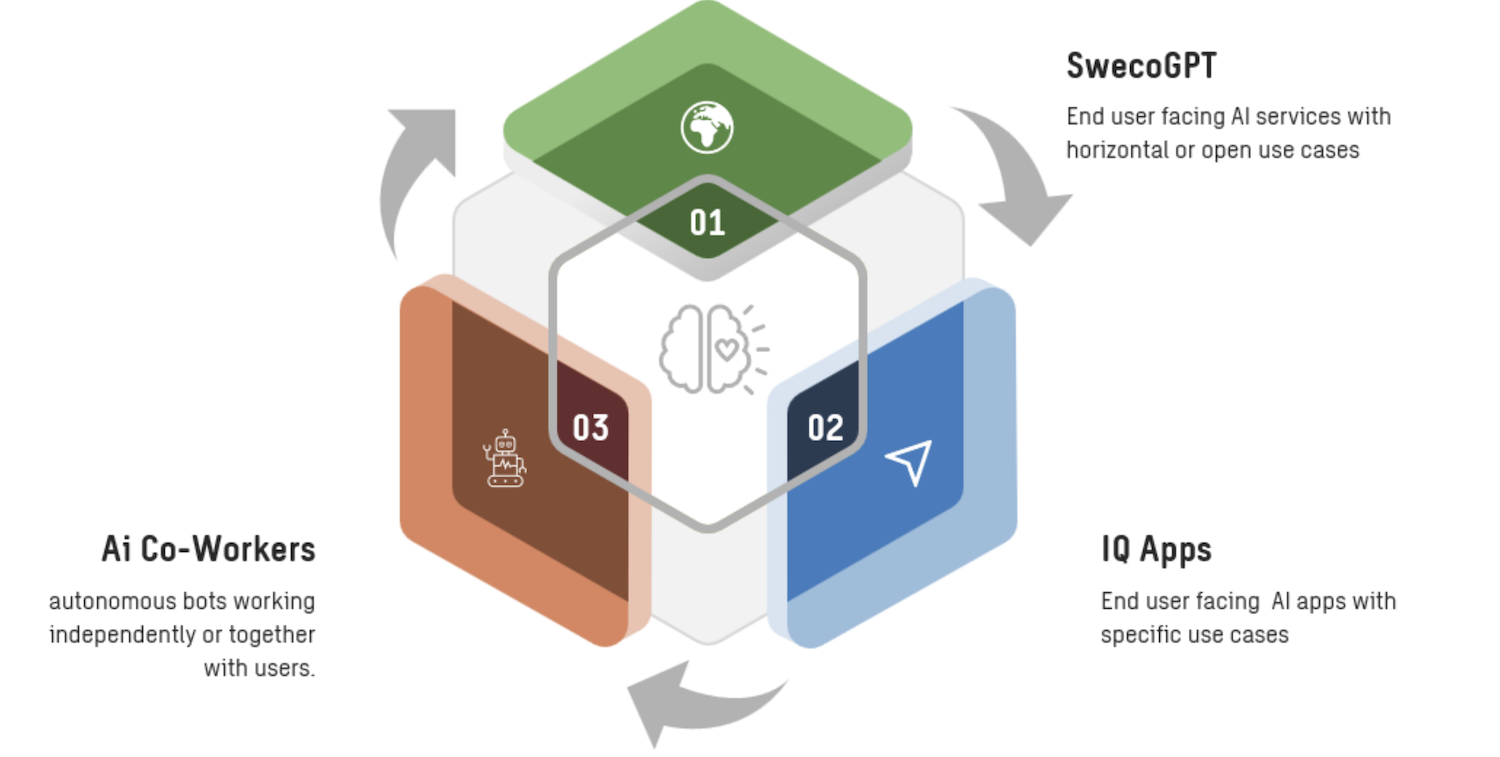The Digital Construction Awards attracted 170-plus entries this year, 85 of which have been shortlisted. Here, we detail the finalists for a new category: Best Use of AI.
This category celebrates the innovative application of artificial intelligence to enhance and transform human processes, productivity, project outcomes and overall client satisfaction within the built and managed environment. Five entries made the shortlist.
Automating Digital Handover | BuildPrompt and HS2
BuildPrompt’s AI solution for HS2 revolutionises infrastructure project documentation verification, transforming a critical but previously unaddressed challenge. By automating the analysis of complex verification and validation matrices (VVMs), it has turned a two-week manual process into an operation completed in less than 35 seconds.
HS2’s requirements management team faced a huge documentation challenge: 37,983 requirements spanning 19 areas and 89 modules across 34 major contracts; the team received approximately 20 Single Assurance Packs monthly, each containing verification documentation requiring multiple reviews.
The manual review process was unsustainable:
- each VVM contained 800-plus rows across 12-plus columns;
- contract guidelines mandated two-week review cycles, consuming 33,860 person-days;
- documents required multiple iterations between HS2 and contractors, causing delays;
- technical debt accumulated as SMEs struggled to process complex files;
- integration risks emerged when compliance issues compounded across assets;
- risk acceptance occurred when reviews were incomplete; and
- cumulative compliance assessment became impossible across numerous contracts.
Previous mitigation attempts using PowerBI and external contractors proved inadequate due to data complexity and inconsistency.
BuildPrompt’s solution combines multiple AI approaches:
- document intelligence to process and understand complex, structured Excel-based VVMs, regardless of formatting inconsistencies;
- natural language processing analyses evidential citations and descriptive text to extract meaning and verify compliance assertions;
- knowledge graph integration maps relationships between requirements, assets, evidence documents, and compliance status;
- classification algorithms identify compliance issues and automatically assign appropriate compliance codes;
- generative AI creates natural language summaries of non-compliance issues and recommended actions.
The system operates through a custom web platform with a specialised AI workflow.
The impact is substantial: an estimated £5.6m in efficiency savings while reducing project risks and technical debt.
BuildAudit | BRE Group/Enable My Team/Imperial College/UNIT9/Reusefully

The BuildAudit project was borne out of frustrations that the consortium partners had when conducting audits of existing buildings. In the past, these audits have been manual, time-consuming, inefficient and collected incomplete data about buildings. Therefore, the consortium decided there must be a better way to capture data using specific AI tools during the right points of an audit in order to automate as much of the process as possible.
The BuildAudit tool combines three technological approaches. First, a ChatGBT-based tool uses an LLM (large language model) trained to predict the types of information and data that building audits require to be extracted and summarised from building O&M manuals. The tool allows users to ask natural language questions, (e.g how many floors does this building have?), and receive summarised answers, allowing for a much quicker and more thorough analysis of existing building documents compared with slow manual searches.
Second, a lidar/visual data recognition-based scanning tool uses iOS devices to scan and automatically create models of buildings. These models contain video capture data, geometries and automatic assignments of building element types. Each element has automatically associated photos, and additional data can be associated with each element by surveyors. This data can be downloaded into a COBie format that can be used to automatically update a project structure and for automated analysis and summary of data in the web tool.
Third, the web tool enables centralised access to the other tools created for the BuildAudit project and a central data collation area for files and data collected as part of a building audit. This tool also allows for the generation of automatic report graphics outputs based on the COBie data outputs from the AI-enhanced scanning tool.
Pilot studies have proven successful. For example, the ChatGBT tool summarised information in a report on types and locations of asbestos found in a building in less than a minute, while a manual search of the same report for this information took around 20 minutes.
Cost Validation Tool | DMRC

DMRC transformed a critical, labour-intensive process on HS2 into a scalable, efficient, and highly accurate system.
The development of the ‘Chris’ Persona, an invoice verification tool, was driven by the need to manage a vast volume of ledger entries and supporting evidence. Previously, only 8% of submissions were manually verified, leading to inefficiencies and potential oversight. Scaling manual processes for comprehensive checks proved challenging due to time and resource constraints.
AI offered a solution by enabling efficient data analysis and processing, with the objective of achieving 100% evidence verification while maintaining accuracy and reliability. The organisation aimed to surpass human limitations by automating repetitive tasks and ensuring thorough verification.
Key project goals included achieving complete checks, implementing suitable architecture for accurate data processing, and designing a user-friendly interface. Team collaboration was crucial in identifying existing manual checks and defining additional requirements, guiding the development of ‘Chris’ to align with human standards.
The challenge lay in creating a solution capable of analysing thousands of complex entries with nuanced accuracy. Defining parameters, training models and ensuring compliance with organisational standards required significant effort and planning.
Unlike rigid rule-based systems, the use of a language model allowed for nuanced understanding and contextual decision-making, aligning more closely with human reasoning.
The project used a large language model (LLM), selected after rigorous testing. Open-source platforms and proprietary solutions were evaluated based on accuracy, processing speed and ease of integration. The chosen model was fine-tuned on domain-specific datasets, ensuring it could interpret ledger entries and evidence reliably.
To ensure smooth integration, a custom UI was developed to make the persona accessible to non-technical users. The UI was designed with usability in mind, allowing team members to easily review flagged entries, provide feedback, and track progress in real-time.
By leveraging AI, DMRC has achieved 100% verification of thousands of evidence submissions processed in hours.
Sweco AI Ecosystem | Sweco UK & Ireland

Sweco recognised the urgent need to enhance process efficiency and employee satisfaction by automating routine tasks using AI. It also wanted to enhance knowledge-sharing by creating a platform that has easy access to a vast amount of data.
Sweco consulted its staff to understand their specific needs and the types of AI support required. The solution it developed combines technology from Microsoft and UiPath.
At the heart of this process automation initiative is UiPath, which powers more than 220 AI co-workers. The deployment of these AI-based automations enables Sweco staff to leverage automation for an array of tasks, ranging from intricate workflows to mundane repetitive tasks.
For all aspects related to text processing and data analytics, SwecoGPT plays a pivotal role. This bespoke version of ChatGPT is built on Azure AI Studio, which provides the necessary tools and infrastructure to develop and train the AI models required for the solution. SwecoGPT meets the demands of an LLM while ensuring the security of sensitive data, thus empowering staff to manage documents, extract insights and generate content with confidence and ease. The platform has been adopted by nearly 90% of Sweco staff, demonstrating its effectiveness in enhancing their work experience.
The synergy between UiPath and SwecoGPT is a cornerstone of the ecosystem, where AI co-workers use SwecoGPT’s capabilities to process text and data swiftly and accurately. For instance, the system can read invoices reliably and process the data directly into an ERP system. This process includes multiple levels of validation performed by both SwecoGPT and the ERP platform, ensuring data integrity and accuracy.
Additionally, AI co-workers can push data to SwecoGPT for bulk analysis or monitor the platform for cost management and uptime, further enhancing operational efficiency.
UK BIM Framework: Ask Morta AI | nima/Morta

The UK BIM Framework provides essential guidance for the built environment, but its size and complexity makes it difficult to navigate and access. As AI adoption increased, nima saw industry professionals relying on tools like ChatGPT for answers, often receiving inaccurate or outdated information. This misinformation risked misapplication of key information management principles.
To solve this, Morta developed Morta AI, a retrieval-augmented generation (RAG) solution that provides instant, standards-aligned answers directly from the UK BIM Framework. Unlike generic AI models, Morta AI ensures accuracy by retrieving authoritative content, offering source-referenced responses, and eliminating AI hallucinations.
- query processing – when a user submits a written query, Morta AI retrieves the relevant sections of the UK BIM Framework content;
- RAG model execution – using an embedding model (nomic-embed-text) and a generative model (Mistral), the AI constructs responses based exclusively on the retrieved content; and
- reference-based answers – each response includes hyperlinked citations from the UK BIM Framework, allowing users to verify sources and ensuring transparency.
Morta AI operates entirely within Morta’s secure servers, ensuring that industry-sensitive data never leaves the organisation. Unlike AI services that train on user interactions (eg, OpenAI’s GPT models), Morta AI does not use data for model improvement, preserving the confidentiality of project-specific content.
Since launching in June 2024, Morta AI has transformed access to BIM guidance, delivering 166,880 document views and 3,548 AI-powered searches. It has driven a 10% increase in site traffic, enhanced industry engagement through AI-driven video campaigns, and improved compliance by ensuring practitioners receive trusted information.
The top search queries, including ‘LOD’, ‘COBie’, and ‘naming conventions’, reveal that professionals are using Morta AI to clarify fundamental and advanced BIM concepts.
The winners will be revealed at the gala dinner on 1 July at the Brewery in London.
The Digital Construction Awards are organised by Digital Construction Week, Construction Management and the Chartered Institute of Building. The first sponsor to be announced is Bluebeam.
View the original article and our Inspiration here


Leave a Reply